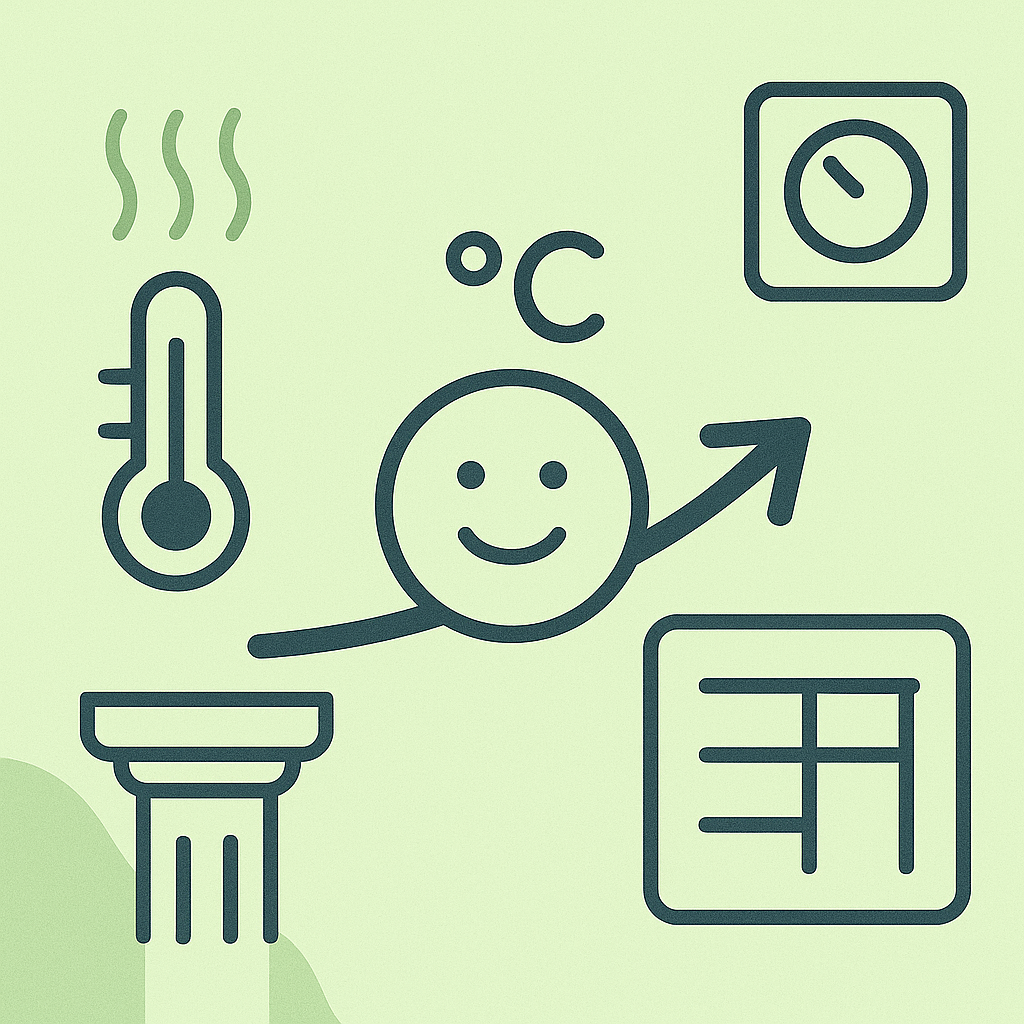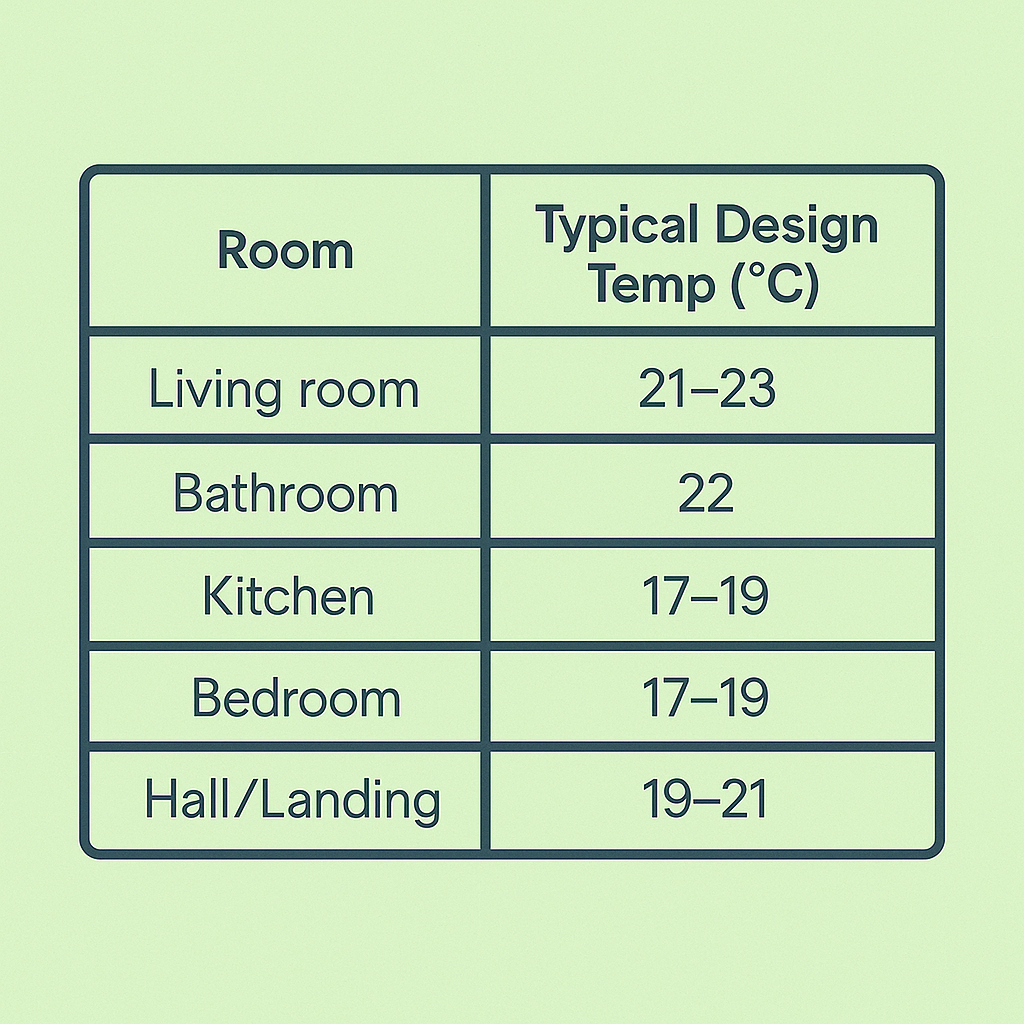
Part 9
Design Temperatures &
Thermal Comfort
What Is Operative Temperature?
We’ve spent a lot of time looking at how heat leaves a home. But let’s flip it for a second — what are we trying to achieve with all that heating power?
It’s simple really: comfort.
Your heating system isn’t just fighting physics. It’s trying to keep humans warm, and humans are fussy little creatures. Some like it toasty, others crack a window at 17°C. Designing for that is as much about people as it is about plasterboard.

Curious how this affects your bills? See how our smart controls keep comfort high & costs low
What Is “Thermal Comfort”?
Thermal comfort is the Goldilocks zone — not too hot, not too cold, and your body doesn’t have to work hard to stay there. When we’re comfortable, we’re not sweating, shivering, or mentally checking how long until the heating clicks off.
The fancy definition:
Thermal comfort is the state in which a person expresses satisfaction with the thermal environment.
It’s affected by six main factors:
Air temperature – Obvious, but only part of the story
Radiant temperature – Heat from surrounding surfaces (walls, floors, radiators)
Air speed – Draughts can make a room feel colder than it is
Humidity – Low humidity = cold nose; high humidity = sticky back
Clothing level – Are you in a t-shirt or a wool jumper?
Metabolic rate – How much heat your body’s generating (sleeping vs exercising)
We can’t control them all. But we can design for the most predictable ones.
Operative Temperature (The Real Measure)
Instead of just aiming for “air temperature”, we use something called operative temperature — a blend of air temp and radiant temp.
Operative Temp = (Air Temp + Mean Radiant Temp) ÷ 2
Most domestic thermostats don’t measure radiant temp, but this gives us a better sense of what comfort actually feels like. A cold wall can make a 21°C room feel like 18°C.
What Temperatures Should We Design For?
Let’s keep it practical. BS EN ISO 7730 and BS EN 12831 give us solid guidance on design temps for different rooms in the UK.
These aren’t set in stone — they’re starting points. If you’re designing for elderly clients, young children, or anyone who prefers things warmer, you might bump those up a degree or two.
For older adults or vulnerable occupants, consider designing living spaces to 23°C for safety and comfort.
Key Take aways to remember.
✅ Thermal comfort depends on air temp and radiant temp
✅ Design temps vary by room type and user needs
✅ Operative temp gives a better sense of “how it feels”
✅ Design for the worst-case (but control for the everyday)
✅ Don’t forget outdoor conditions — especially on a hill or near the sea

